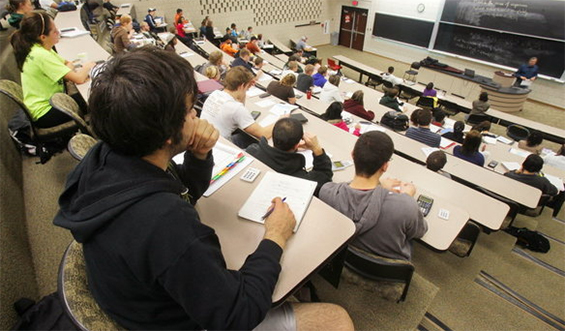
A recently-released report from the MSI Consortium for Innovation and Change has shown that close to 50% of students at two-year institutions and almost 20% of those attending four-year institutions were placed in developmental education (DE) courses.
The report, “Not Just Faster: Equity and Learning Centered Developmental Education Strategies,” found that less than half of the students who take DE courses actually pass them and are then able to take college courses that offer credit toward a degree. However, many of those who do go on beyond the DE courses are not successful in their completion of the entry-level courses they must then take.
Although DE courses come with a price tag similar to that of a full-credit-bearing class, they usually do not offer any college credit to students who take them. As such, the authors suggest this connects low DE and the college course completion rate thereafter with retention and degree completion, particularly for low-income students and students of color, who they say already have less money to spend on their educations.
According to the authors, 56% of African American students, 45% of Hispanic students, and 55% of Pell Grant recipient students were found to be required to take DE courses. These statistics were found across all institution types, including Predominantly White Institutions. Almost 100% of two-year institutions and 80% of four-year institutions offer and enroll students in DE courses.
Students who are typically placed in DE courses are usually enrolled in institutions like community colleges and MSIs. These schools often have admissions policies that are geared toward offering opportunity, but also need to offer developmental and advanced credit-bearing courses as a result of budget constraints. As a result, an average of 70% of students at MSIs require at least one DE course with less than 50% of those students obtaining a bachelor’s degree within six years.
“The current push in higher education to make college level, credit-bearing courses more accessible to all students, but especially students of color and low-income college students, is the single most significant action being taken to dismantle structural inequality in higher education.”
The authors suggest that students are more likely to complete a college degree program if they are enrolled in courses that counts toward either a degree or credential in their area of interest. In addition, they say these students need support offered through college-level courses, suggesting that co-requisite models could provide modified support to all types of students, adding that gateway courses that include mandatory support could actually help students more than traditional course models.
The authors go on to say that partnerships between college-preparatory and postsecondary programs should be improved in order to help students before they enter college and limit their need for remedial courses.
” The continued improvement of DE requires coordination and support from the diverse array of higher education advocates. Although DE reform requires a substantial investment in time, effort, and resources, the result could be the most significant contemporary effort to dismantle structural inequality in higher education.”




